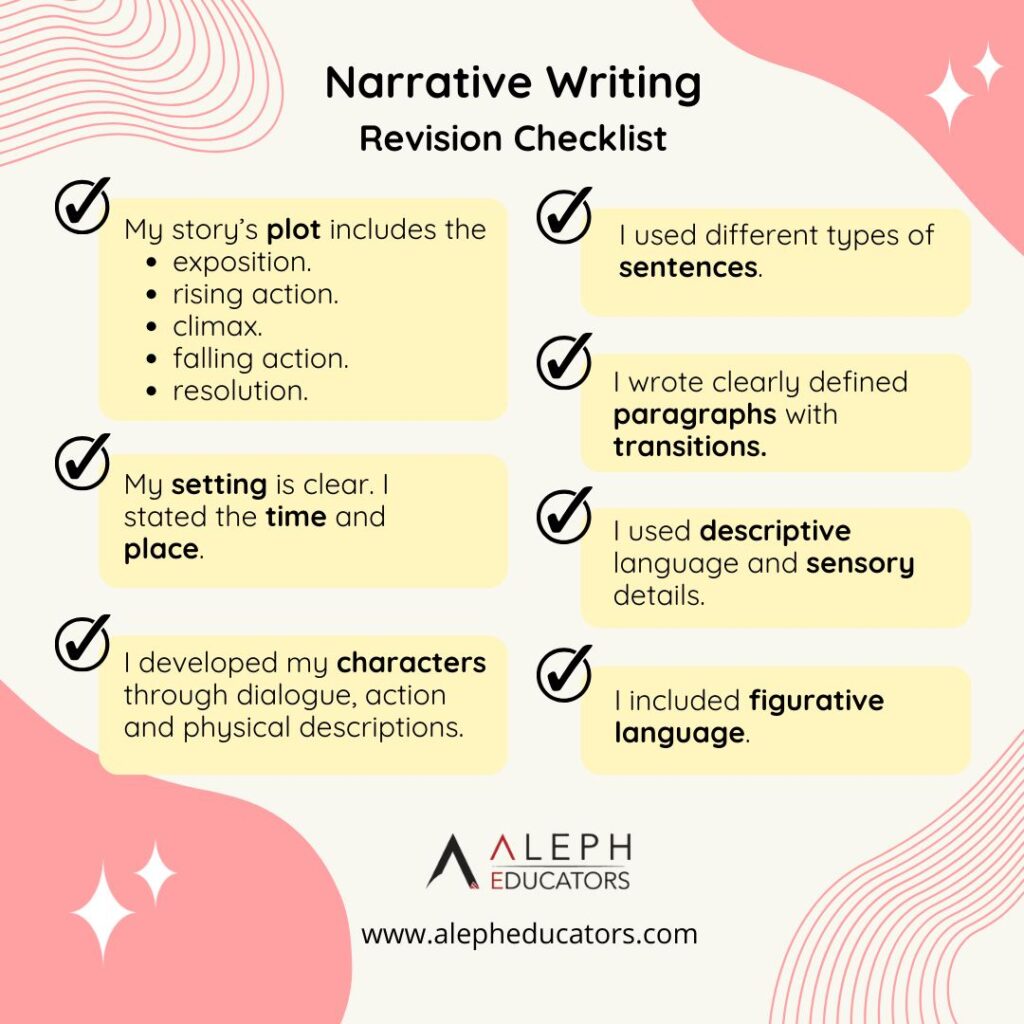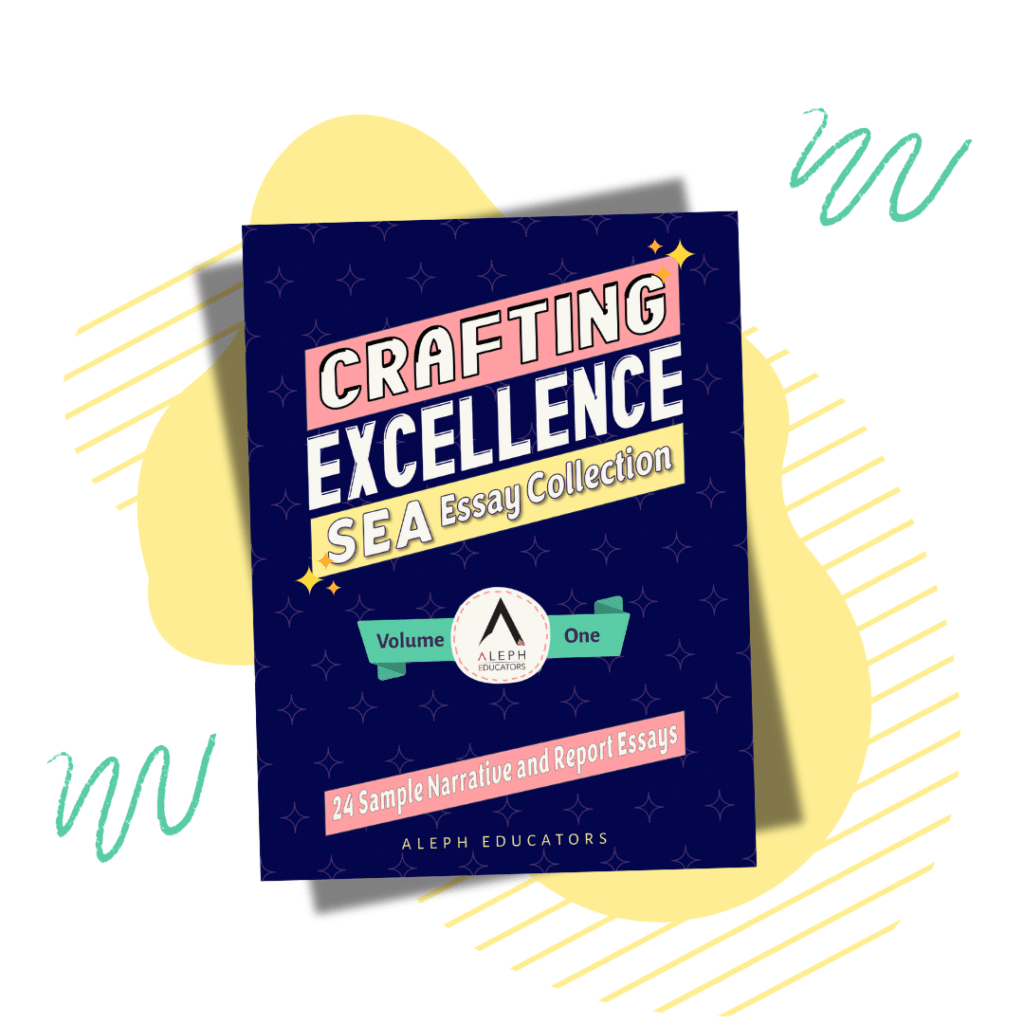Since the beginning of the term, we’ve been exploring the elements of high-quality essays in our tutorials in the Trinidad and Tobago Newsday. For our SEA 2025 students, our final tutorial is on the 18th of November. After that, we’ll only be publishing practice tests leading up to the exam.
Due to popular demand, we’ve also published Crafting Excellence: SEA Essay Collection (Vol. 1) which includes 24 ELA writing sample essays in both narrative and report writing. With detailed annotations in 4 samples, the collection clarifies prompts and provides insight into the structure, content and style expected of excellent SEA essays.
In this post, let’s break down some of these elements.

1. Strong Character Development
Use the following techniques to bring your characters to life:
- Actions: Show who your character is through what they do.
Example: Keisha slammed the book shut and her brow furrowed in frustration as she paced back and forth.
- Dialogue: Show your character’s personality, thoughts and feelings in how they speak.
Example: “I’m not scared of a little rain!” Jason exclaimed as he pushed the door open and stepped into the storm.
- Descriptions: Describe your characters’ appearance and personalities in a way that gives readers a clear picture of who they are.
Example: Mrs. Thompson was a whirlwind of energy. Her wild, frizzy black hair bounced as she hurried from desk to desk to help each student.
2. A Structured Plot with Key Elements
Every strong narrative follows a clear plot structure that includes the following:
- Exposition: The main character(s) and setting are introduced. You can check out great story openings here.
- Rising Action: A problem arises that your character must deal with. Suspense builds.
- Climax: Your character faces the most difficult or exciting situation. This is the most intense part of the story.
- Falling Action: Your character begins to overcome the problem. Excitement starts to wind down.
- Resolution: Any loose ends are tied up and the story concludes.
3. Detailed Setting Development
- Include where and when the story is happening.
- Describe what characters can see, hear, smell, touch and, in some cases, taste, in the setting.
- Describe the weather to reflect the mood of the scene.
Examples:
The classroom smelled musty and an old clock ticked loudly on the peeling green wall.
The salty sea air whipped around Dylon as he stood on the windy pier.
4. Effective Use of Figures of Speech
Figures of speech make your writing more engaging and help your reader visualise the events unfolding.
- Simile: Compare two things using the words “like” or “as” to show how they are similar.
Example: Nikita moved through the hallway like a shadow so no one would notice her.
- Metaphor: Compare two things directly, without using “like” or “as,” by saying one thing is another.
Example: The game was a rollercoaster of emotions, with each goal making the crowd cheer or groan.
- Personification: Give human qualities to non-human things.
Example: The old floorboards groaned under their feet.
5. Smooth Transitions
Good narratives flow naturally from one part to the next. Use transitions to show the sequence of events or a change in setting or time (e.g., “later that day,” “suddenly” and “meanwhile.”).
Example: Shaheed bit his nails nervously. Meanwhile, Shawn leaned back confidently with his arms crossed.
6. Different Types of Sentences
- Simple sentences: This expresses a single complete thought, with one subject and one predicate.
Example: Keisha smiled brightly.
- Compound Sentences: This is made up of two or more independent clauses (complete thoughts) joined together by a coordinating conjunction, like and, but or so.
Example: Keisha smiled brightly, and her eyes sparkled with excitement.
- This consists of one independent clause and at least one dependent clause. They are connected by a subordinating conjunction, like because, although, if or when.
Example: Keisha smiled brightly after spotting the rainbow in the sky.
Crafting a great narrative essay requires attention to character development, plot structure, setting, figures of speech and transitions. In our next post, we’ll be looking at the elements of high-quality SEA reports.
If you’re looking for more guidance and tips, check out Crafting Excellence: SEA Essay Collection (Vol. 1) at the following locations:
Keith Khan’s Books Etc.
- San Fernando: 653-2665
- Port of Spain: 625-2665
Nelson’s Bookstore, Tobago
- Ashora Court, Breeze Hall, Lower Scarborough: 639-1313
- Portmall, Scarborough: 660-7506



Let’s Help You Succeed!
Join our mailing list to get updates and tutorials straight to your inbox.
Your success is just one click away!
You have Successfully Subscribed!